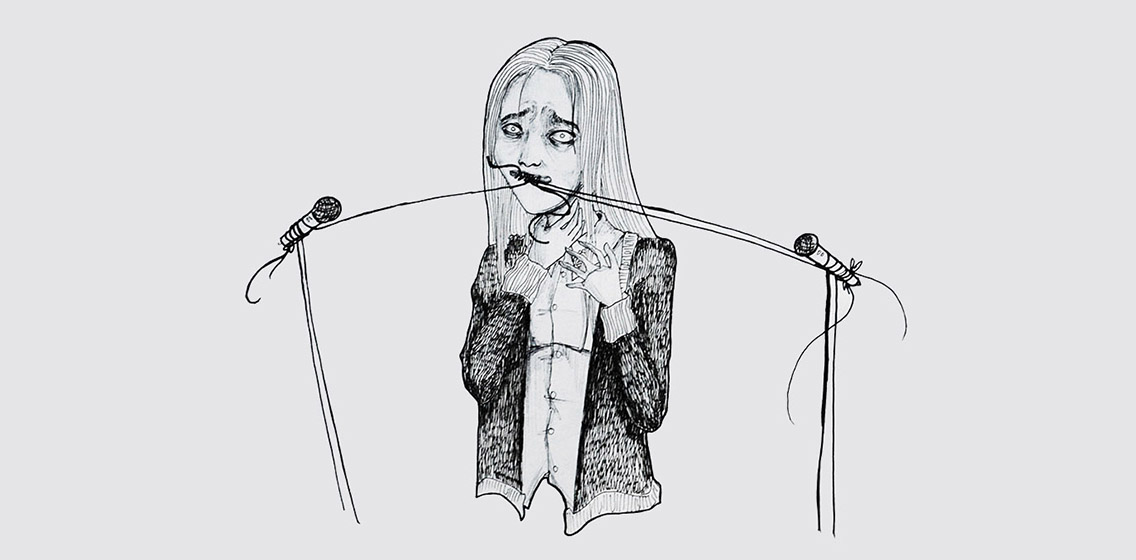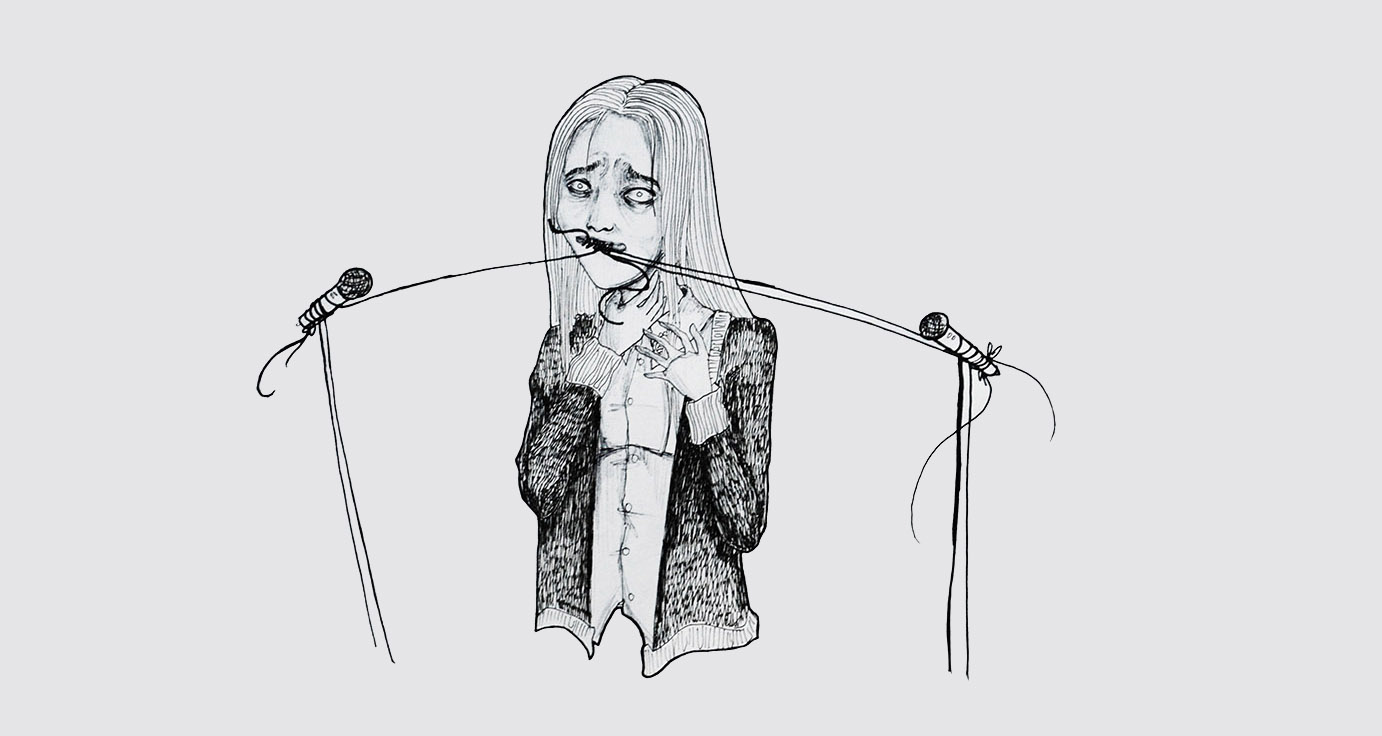Tormented tongues: Breaking down glossophobia
For most students, nothing is more frightening than speaking in class for a report, a speech, or even an introduction. Aware of the struggles of stage fright, students enduring public speaking are subjected to sweaty hands, uneasiness, rapid breathing, and an unexplainable feeling of panic. Given how everyone fears failure and criticism, the agonizing case of glossophobia has become the ideal trap for anxious students forced to be in center stage.
The primera phobos
Glossophobia, the term used for the irrational fear of public speaking, has been the top-notcher among the list of phobias that people experience. The intense fear brought about by speaking in front of a sea of people, glossophobia hinders tasks that involves social interaction. The hindrance serves as the mighty shovel that digs a six-foot hole for our doomed self-esteem and performance.
About 46 percent of diagnosed glossophobia cases are most commonly found in college students as stated by Lisa Lampe in her article Social phobia: common, disabling and treatable published in the journal Current Opinion in Psychiatry. Pressure arising from preparation of future career possibilities after college may be the main reason for this diagnosis. Usually attributed to stress and anxiety, glossophobia can often be misdiagnosed as typical panic attacks and are overlooked to make way for recitation requirements needed to survive a subject.
The intense fear created by glossophobia can be due to several factors, including large-scale classrooms filled with numerous people. The article One-Session Exposure Treatment for Social Anxiety with Specific Fear of Public Speaking published by C.S Hindo revealed that the larger classroom setting, the higher level of anxiety the student will experience.
The severity of the anxiety prevents students from asking questions in class, which in turn makes it harder for the student to fully understand the lesson. Hindering student-professor productivity in a classroom, glossophobia undoubtedly contributes a massive impact to the poor class participation of students.
Thoughts in turmoil
While it may seem that you’re just nervous under the spotlight, the symptoms you’re having may be a sign that you’re anxious of public speaking. According to glossophobia.com, dried up mouth, involuntary shaking of body, a weak voice, and rapid heartbeat are the most common physical manifestations that can be observed when someone is experiencing glossophobia. On the other hand, these commonly experienced symptoms might only be a product of our mere thoughts.
Despite the apparent physical manifestations of anxiety, some scientists suggested that the treatment of these symptoms are unnecessary. In a study entitled Practitioner Review: Psychological Management of Anxiety Disorders in Childhood, Mark Dadds and Paula Barrett concluded that phobias are a mere state of mental health, and the fear induced by phobias is a result of internally stimulated thoughts. The researchers furthered that since these anxieties are only mental stimulations, an individual can take control of the severity of the effects by thinking differently.
By changing our mindset, the brain can effectively prevent undesirable physical consequences of glossophobia. Instead of thinking negatively and anticipating bad outcomes, students can think about the rewards they’ll reap after their presentation. Keeping the faith that we can defeat the demons of public speaking during class presentation can level up our chance of actually overcoming the phobia.
Filling the silent gap
The anxious and gut-wrenching feeling caused by public speaking can also let its presence be felt through subtle verbal mannerisms. Due to overwhelming pressure and fear, a student’s speech delivery can be negatively affected even if it is well-prepared and thought out.
In an article about glossophobia treatment posted on Online Therapy, an unending use of “uhm” and “uh” can be the most observable effect of the stressed-induced anxiety. Noam Chomsky, a renowned linguist at Massachusetts Institute of Technology, considered these phrases as “errors in applying knowledge of language in actual performance,” which is a principle opposed by Herbert Clark of Stanford University and Jean Fox Tree of the University of California at Santa Cruz. Both argue that these phrases serve as conversation managers meant to avoid awkward, silent gaps in a conversation.
The vulnerable silence caused by the nerve-wrecking speech can actually weaken the ability of the speaker to redeem himself from the embarrassment and inconsistency of the delivery. In a sense, speech mannerisms serve as saviors of our dying speech presentations.
Over some degree though, these phrases that we use to back up our speech can be a distraction to the listeners. These mannerisms will be perceived by the spectators as a sign of unpreparedness. The discomfort of the situation leads our stress-driven minds to find various relief like using “uh” and “uhm” to pacify the chaotic emotions that we are dealing with during public speaking. These silent gap fillers can be the unconscious way of our brain to rescue our tormented selves from our disorganized thoughts during public speaking.
The soul of distress
The factors that gave birth to the fear of public speaking can be tracked down to that the fact that we are so concerned with our image and the harsh criticism we might get from the audience. But there is probably a more concrete reason as to why we, social animals, are vulnerable to social phobias.
The theoretical approach of Evolutionary psychology points out that as social animals, humans value being part of a group; being singled out and on the outside can make us feel uncomfortable. The discovery has been the reason we feel extremely anxious when we engage in public speaking. In a study published in the journal Psychophysiology, University of Würzburg psychologist Matthias Wieser and his colleagues emphasized that being the center of attention causes our brains to easily detect changes in the facial expressions of the audience. The recognition of unsatisfied and angry faces in the audience carves a great impact on the speaker’s self-confidence, hence the quivering voice and fast-paced delivery of speech.
In circumstances like this, being a social animal by nature does not give us the heart to overcome social phobias like glossophobia because our mind is battling a more critical war with our ultimate fear—the fear of rejection.
Elixir for composure
A familiar fear that lies around every corner, glossophobia has led countless students falling into the abyss of anxiety. Although it has been a very common fear, the remedies to this can still be conflicting with one another. Psychologists have suggested various techniques on how to overcome it, but there is still no universally accepted way to achieve the goal.
The article Presentation Rules to Break: Practice in Front of a Mirror published by Huffington Post pointed out that the overused misconception of practicing in front of a mirror to overcome glossophobia will only make you more self-conscious. The habit of speaking in front of a mirror will be in vain if your presentation is to be delivered to a large crowd of people. The ineffectiveness of self-feedback diverts your focus away from the audience and leads to self-reflection.
Practicing in front of the mirror might not help overcome speech anxiety; however, it does put into perspective the other possible ways to eliminate glossophobia from our system—like realizing that the phobia is all in our mind.
We might feel that glossophobia is difficult to overcome. But we can always use this nervousness to fuel our desire to do better in order to share ideas that has been sitting in our consciousness all along, waiting to be heard.




